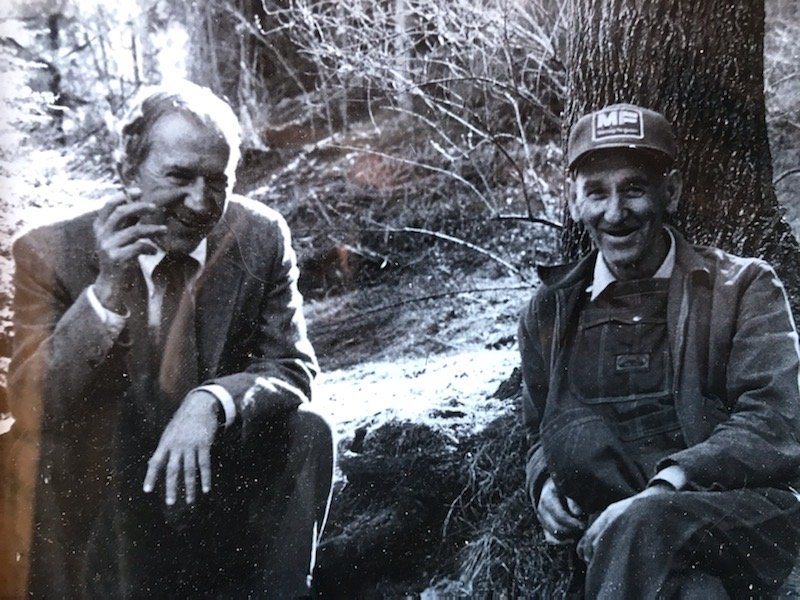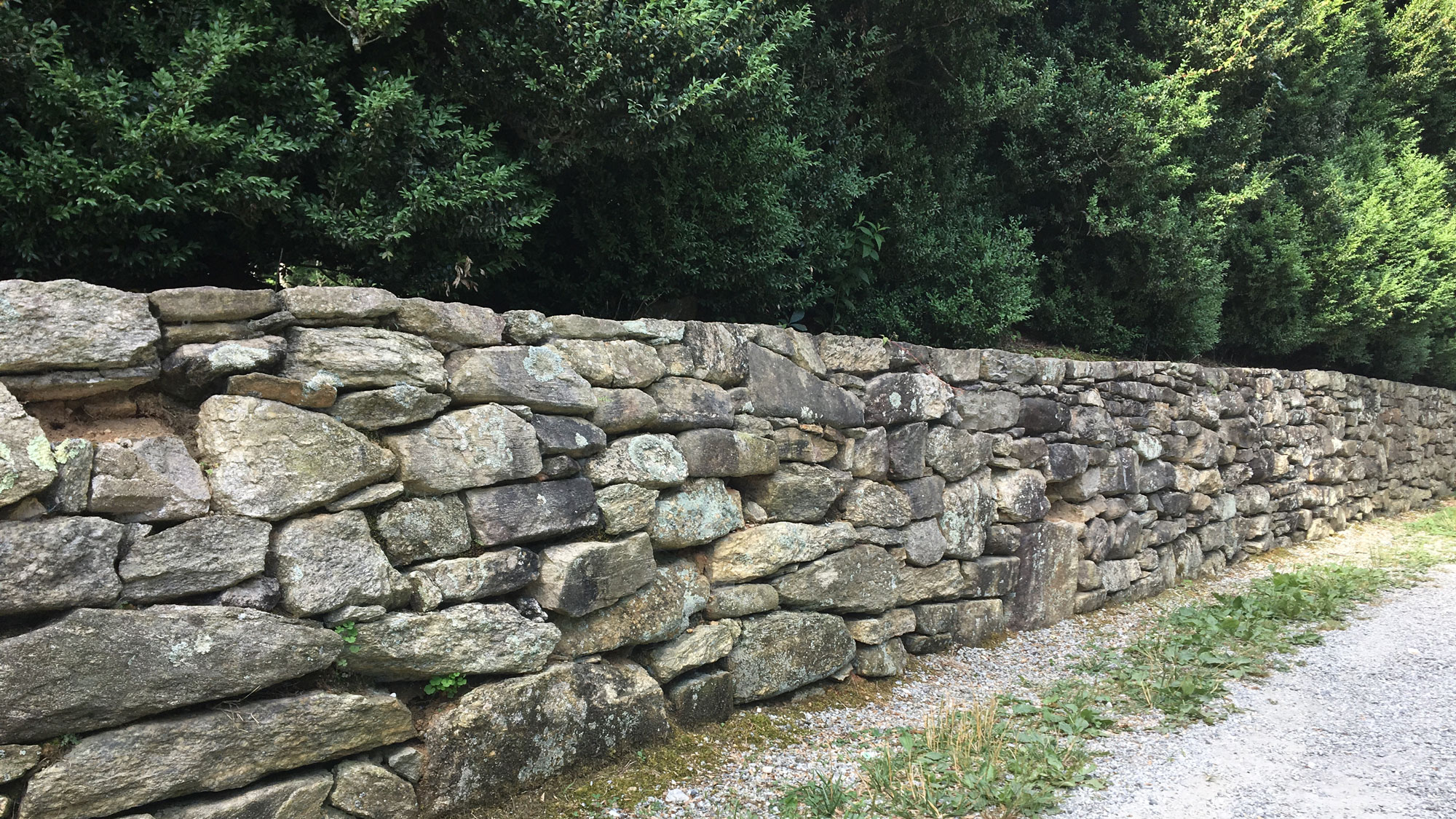Moonshine in the Mountains
/A brief history of moonshine
Whether you call it firewater, white lightening, hooch, mountain dew or just moonshine, the home-brewed alcoholic beverage has a long and storied history in the United States. Nowhere is that history more colorful than in the southern Appalachian Mountains. Moonshine’s rebellious past and contentious present make it a helluva drink and North Carolina the moonshine capital of the world.
According to Webster, moonshine is illegally made liquor. It is also important to not confuse moonshiners with bootleggers. Moonshiners make the liquor; bootleggers smuggle it. The term “bootlegger” refers to the 1800s habit of hiding flasks in the boot tops, but with the introductions of cars, it came to mean anyone who smuggled booze. The term “moonshine” comes from the fact that it is made at night so people will not see the smoke from the still or be detected by the authorities.
The Southern roots of the practice of making whiskey have their origins in Scotland and Ireland’s stills where there has been a long tradition of home-brewing and distilling. Many Scotch-Irish immigrants settled in the southern Appalachian Mountains and brought their home-brewed alcohol to the mountains with them. The most popular drink was a Scotch-Irish recipe called “uisce breatha,” a Gaelic phrase meaning “the water of life.” This simple family recipe was the very root of moonshine with corn as the main ingredient.
In 1840, corn liquor sold for 35 cents a gallon and there were no restrictions on how much could be made. The farmers counted on it as a prime source of income for generations of mountain people. Historically, it was one of the few ways to earn cash in the subsistence-dominated mountain economy.
Site of old still, with barrels shot up by revenuers. Image provided by the author.
With the severe food shortages during the War Between the States, many Southern states made it illegal to use corn and barley for anything but food. Moonshining as an illicit trade emerged and forced distillers to go underground. Most Confederate authorities were more concerned with winning the war than clamping down on illegal distillers, so there were few consequences. After the war, the federal government levied a tax on home-brewed liquor to help pay the war debt. This did not sit well with the very independent Scotch-Irish, who saw nothing wrong with distilling liquor. Instead of paying the tax, they simply moved their operations farther into the depths of the inaccessible mountain areas and the war between moonshiners and revenuers began. The government-appointed tax collectors became notoriously feared figures, liable to come charging over the mountain at any moment to raid an established still.
Moonshining had its heyday in the 1920s when the government banned alcohol during the Prohibition years. The demand for whiskey increased across the country and illegal distilling became highly profitable. Rampant unemployment during the Great Depression saw another window of opportunity for those who made their own whiskey and the farmers of the Appalachians were more than happy to make the extra money. Many people thought moonshiners were outlaws, but the way they saw it, it was the federal government that enacted the excise tax that poor farmers had to bear. It was either starve or make liquor and it’s easy to understand which one they chose. It was all legal until they got caught.
The grave of James Brown at St. John in the Wilderness. Image provided by the author.
Bootlegging stash locations were sacred — literally, as they included the use of graveyards and church grounds. The Episcopal Church of St. John in the Wilderness in Flat Rock was an infamous local site for a bootleg exchange. The grave of Scotsman James Brown, a bugler for the 1815 Royal Scots Greys in the Battle of Waterloo, came to Flat Rock by way of the Baring family. Brown worked for the Barings until his death in 1840 and was buried at St. John in the Wilderness, a church the Barings built to serve as their spiritual home during summers in Flat Rock. His grave was covered with a brick masonry structure that was then topped with a marble slab. This structure still exists and is directly adjacent to the historic church.
Despite the fact that James Brown’s body had been disinterred, the church kept the brick edifice that had covered his gravesite. Later, during the era of Prohibition, local moonshiners decided that it would be a perfect place to distribute their wares. They would take orders and come to the church in the dark of night and raise the marble top on the old grave to leave the moonshine in the empty space below. Then they would retire to a discreet distance and wait for their customers to pick up their purchase and leave payment in the gravesite. This went on for a long, long time until Prohibition finally ended in this country. To make the story even better, allegedly when a bootleg exchange occurred, James Brown played his bugle from the grave.
Green River
Nestled in the mountains of southern Henderson County are communities that date back to the county’s first settlers and earliest land grants. Bounded by ramparts known as the Pinnacle, Grassy, Little Rich and Grassy Top, the Green River Township lies east of the Continental Divide and north of the Greenville Watershed.
The early inhabitants of the Green River community were primarily farmers. Family names included Maybin, Capps, Staton, Davis, Stepp, Beddingfield, Freeman, Heatherly, Levi, Morgan, Osteen, Pace, Taylor, Ballard, Jones, Camp, Anders, Redden, McDowell and Ward. Their legacies, now spanning five and six generations, are a rich part of the Green River heritage.
In the early 1900s, many of these mountain folk, a hardworking, God-fearing lot, moved in from their farms to help with construction of the mill village in Tuxedo. Once completed, most of the women and children remained to work in the Green River textile mill for a regular cash income while the men maintained the family farms.
The history of the Green River people includes many stories of moonlight entrepreneurs amidst exceedingly tough circumstances. As the Depression emerged, the mill-working farmers were forced to turn to moonshining and bootlegging, which thrived in spite of legal and religious condemnation and was a good way to make extra money in a cash-poor economy. Local historian, musician and mill villager Robert Ballard tells the story of his grandfather’s “shine” days: “Grandpa was a small operator, but he managed to get caught making corn liquor. He probably would have gotten away with it had he not been sampling the finished product and broke his leg in an unfortunate getaway attempt.”
Alex Schenck and Newman Levi at Green River. Image courtesy of Missy Schenck.
In 1953, Laurie and Alex Schenck purchased 3400 acres, now called Green River Preserve, to spend weekends fishing, hunting and exploring. Adjacent to the current DuPont State Forest, the two parcels were about 20,000 acres together. It was a perfect location for moonshining to occur. The area was remote and difficult to access. The property’s isolation meant it was easy to distill illegal liquor without the knowledge of the authorities. For many in the valley, there was simply no way outside of moonshining to earn any cash. As long as corn grew and spring branches ran down the mountainsides, whisky was made.
My husband, Sandy Schenck, was fortunate to learn the lore of the Green River Valley from the people who had lived there for generations. Newman Levi, one of the early caretakers of the preserve, taught him about tracking, hunting and early valley customs. “Grouse hunting took us all over the land. We walked forever,” said Sandy. “If we ever got close to a still or saw evidence of one, Newman taught us to turn around and get the heck out of there. Moonshiners didn’t wait to see who you were before they started shooting.”
Lori and Alfred Heatherly on the porch of the one-room cabin at Green River that Alfred was raised in. Image provided.
Alfred Heatherly, another caretaker, and his wife, Lori, taught Sandy stories of Cherokee people who once inhabited the land and life in the valley in the early 1900s. Solomon Jones, the illustrious road builder of the Carolina hills, owned a good bit of the land in the Green River Valley including the headwaters of the river. Solomon’s bother, Robert, was the first to live on the Green River property and bring his moonshine skills with him. For more than 100 years someone in the Jones family, including the Heatherly descendants, operated a still on the Green River property.
Alfred’s father had the largest moonshine operation on the head of the river. It was the best tasting liquor in the county. “In the old days we made likker that was likker,” said Alfred. “Our likker was pure corn, with sweet shorts and a little rye to top. It wasn’t this sugar likker or radiator likker or chemical likker. It was the real thing. There was two kinds of likker — the fighting kind and the lovin’ kind.”
Once some men showed up at the Tuxedo Community Store wanting to hire hunting guides, the locals knew immediately they were revenuers, as it was clearly not hunting season. The men were willing to pay good money on a daily rate. The community recommended they hire Mr. Heatherly — said he was the best tracker in the county. For days, Heatherly walked the men all over the mountains and valley, never finding a single still. At no time did production of moonshine cease, and the revenuers went home empty handed.
Another time when Sandy’s parents were having an afternoon gathering, a man came to the door of their cabin with a mason jar of white liquid and said, “Here’s my rent — my still is on your property, but don’t tell my wife. She works for the sheriff.”
“Brack Shipman was an old hermit squatter who lived in a shack on the side of Green River Road just past the big Prayer Rock,” recalled Sandy. “When my parents bought the land, they let Brack stay on it until he died in the 1960s. He made moonshine in a cave called the Devil’s Den on the mountain across the river and sold it out of a big hollow poplar tree just off the road. The law never bothered him. About 30-plus years later, I was out with a group of campers and told the story of Brack and moonshining with them. A curious camper wandered over to a hollow-looking stump, and there in the bottom of it was an old dirt-covered mason jar of moonshine. It was an exciting and fun end to our hike and the legacy of moonshining in the valley.”
Steve Jones and his family have lived in the Green River community for generations. He is a descendant of Solomon Jones and his family settled and lived on the land that is now Green River Preserve and our summer camp. In talking with Steve, I asked him about the legendary moonshine skills of his family and some of their stories.
“Most of my family was involved in timber and moonshine. In my family’s time on the head of the river, moonshine was pretty much an accepted thing. Back then everybody made liquor to survive ‘because times were hard and there were young’uns to feed.’ The law pretty much looked the other way unless you made bad liquor or caused someone to have health problems or die. There was a strong but secretive presence of it. Oddly, moonshine didn’t become a ‘sin’ until my parents’ generation. As a matter of fact, most churches in this area were built with liquor money.”
Ironically, Steve also had a Brack Shipman tale to tell too. “Once my father and his cousin, T. B. Ballard, each bought a gallon of shine from Brack and then picked up their dates. Long story short, they ended up at a filling station in Rock Hill, South Carolina. It was about 2:00 in the morning when Ma and Pa got married under the gas station lights.” It must have been the lovin’ kind!
—-
Information for this article was obtained by referencing the published works of Terry Ruscin, Louise Baily, Robert Ballard, Bruce E. Stewart and Vira Jones Stinson. Various newspaper and magazine archives including The Hendersonville Times, The Asheville Citizens Times and Bold Life as well as published works from Appalachian State University and The Center for Cultural Preservation added significantly to it.
Missy Craver Izard Schenck was born and raised in Charleston, South Carolina. She resides in Flat Rock, North Carolina, with her husband, Sandy Schenck, where their family runs a summer camp. Missy currently serves as the president of Historic Flat Rock, Inc., a position once held by her father-in-law, Alex Schenck, the first president of the organization and a founding trustee.
—








